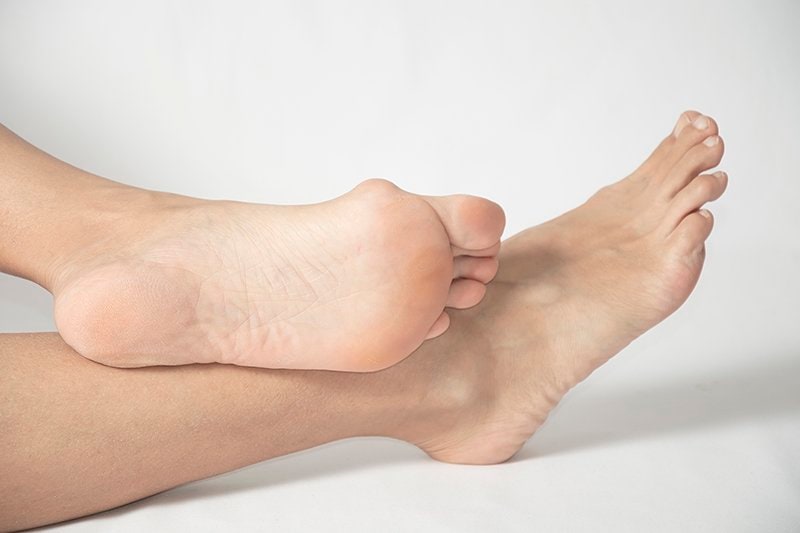10 Things You Need to Know About Bunions
 When you hear someone talking about their painful bunion, do you know what that really is? Most people think a bunion is an abnormal growth of bone protruding from the big toe joint, but in fact, bunions are aa structural issue caused when the big toe joint becomes dislocated and begins to shift inward toward the adjacent toes.
When you hear someone talking about their painful bunion, do you know what that really is? Most people think a bunion is an abnormal growth of bone protruding from the big toe joint, but in fact, bunions are aa structural issue caused when the big toe joint becomes dislocated and begins to shift inward toward the adjacent toes.
The large bump that is an identifying marker of a bunion is the metatarsal creating a knobby area due to the shifting of the joint. This protrusion can start out small, but when left untreated, can become large and painful, and can affect everything from buying shoes to simply walking.
Here are 10 important things to remember when it comes to bunions and treatment:
- You may have a mild bunion and not realize it. Some bunions aren’t painful when they first form and may not be noticeable to the untrained eye. Over time, however, the joint’s stability can deteriorate, making the bunion more noticeable and subsequently, more painful.
- You may be genetically pre-disposed to bunions. While you can take preventative measures to keep a bunion from forming, the reality is that if you have a parent or grandparent that suffered from bunions, you’re more likely to get one, despite your best efforts.
- Women are more likely to get bunions, and because of fashionable footwear, are more likely to suffer from the more painful variety.
- There are several non-surgical treatments for bunions, but it’s important to keep in mind that these treat the symptoms and do not correct the joint deformity. These include bunion pads, toe spacers, and bunion splints, which help to realign the foot to normal position. These are also effective treatments to manage pain.
- Surgical treatment realigns the natural position of the toe. However, in more extreme cases, the other toes may be affected and additional treatments may be required to correct the proper function and alignment of the foot. Even then, there are rare occasions when a bunion may reform over time.
- There’s never a bad time to seek treatment if you feel you have a bunion. Rather than waiting for the condition to worsen, seek out a podiatrist’s expert opinion when the bunion is still small. This can prevent it from becoming bigger and more painful. If you’ve developed a painful bunion it’s important to seek treatment right away. Lack of treatment can lead to worsening problems, like arthritis and altered gait, which can bring on other foot issues such as calluses, joint problems and more.
- You can help prevent a bunion from worsening by being smart with your shoe selections. Avoid trendy pointy-toed shoes that only cramp your toes. High heels contribute to altered foot mechanics, as do flip flops, both of which can put additional pressure and strain on an already malformed joint. Minimalist shoes and roomy toe boxes are the smarter choices.
- Muscle spasms in the affected foot are a tell-tale sign that your foot mechanics are starting to suffer. This is a warning sign that your muscles are trying to stabilize an unstable foot, and are becoming less effective over time. Watch out for knee and back pain as well, which are signs of an overcompensating gait pattern.
- It’s important to keep your foot muscles strong to counteract any muscle imbalances caused by a developing bunion. Performing simple foot exercises daily, such as pointing and flexing the toes or using a tennis ball to roll the arches, have many benefits in creating more balanced foot mechanics. These exercises can make activities of daily living, like walking and exercising, less painful.
- Arch supports can sometimes benefit people with bunions. Bunions and other deformities are more likely to occur if you have flat feet, due to the existing issues that pronation can cause in the structure of the foot. Proper alignment of the toes when walking can prevent a bunion from getting bigger. Custom orthotics address both flat feet and can pad and support painful bunions.
It can be challenging to identify if you have a bunion, so it’s always best to leave a proper diagnosis to the experts. Podiatrists can also perform a thorough foot exam that identifies any other structural deformities or mechanical abnormalities. A full treatment program can be put together to have you putting your best foot forward in no time.